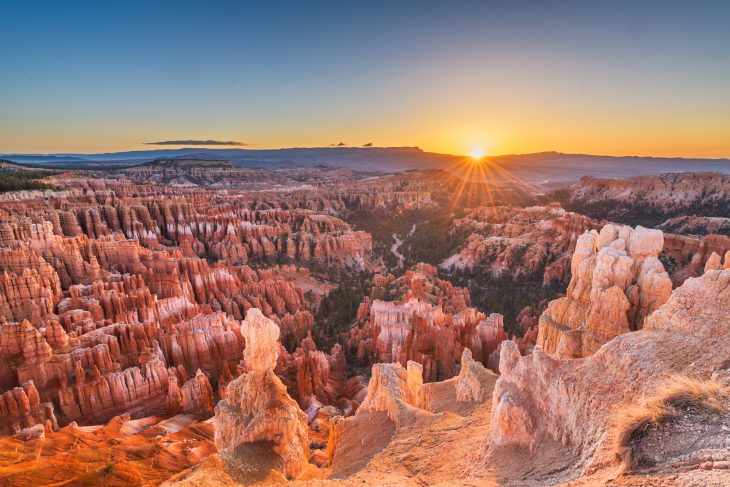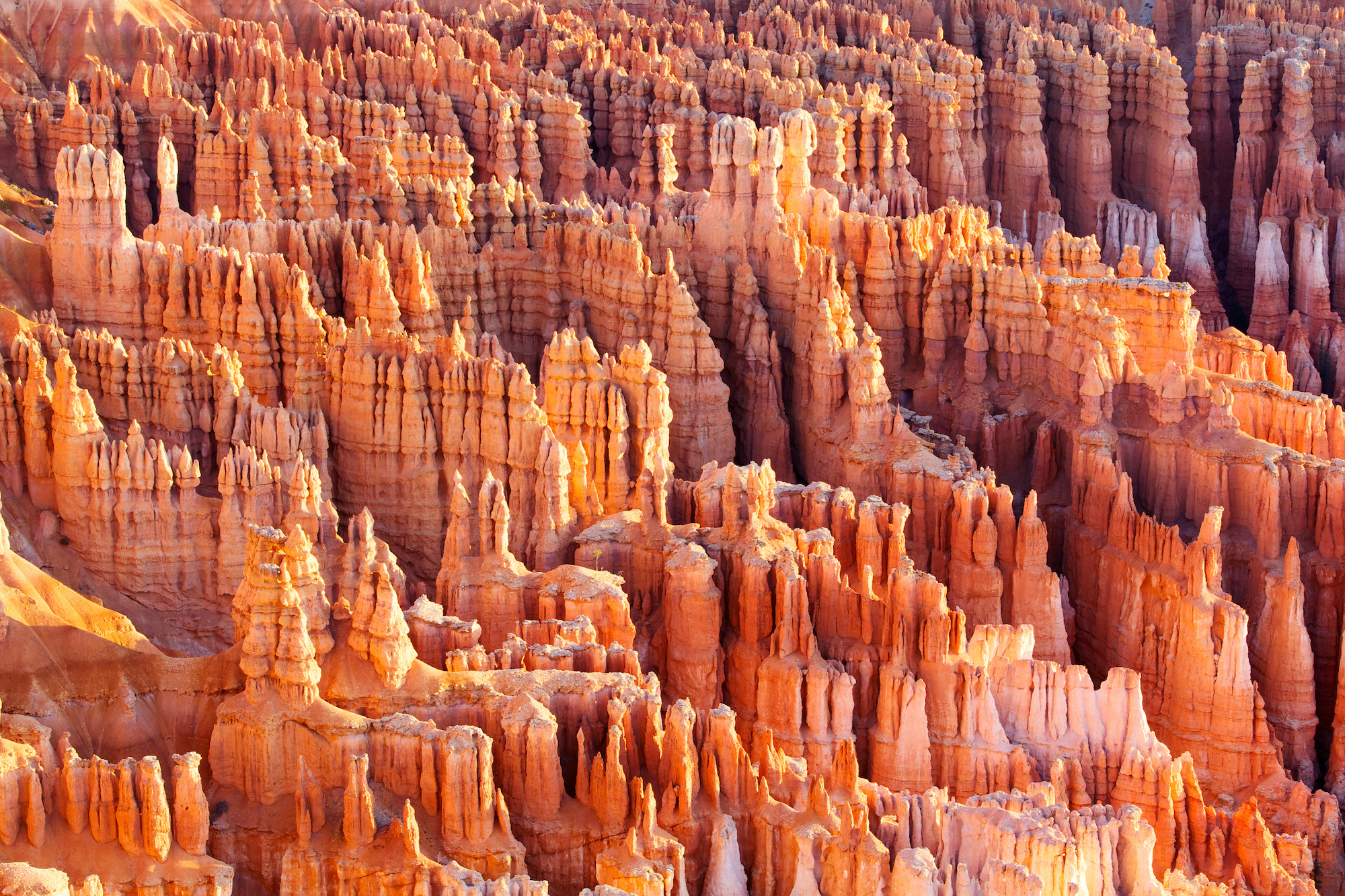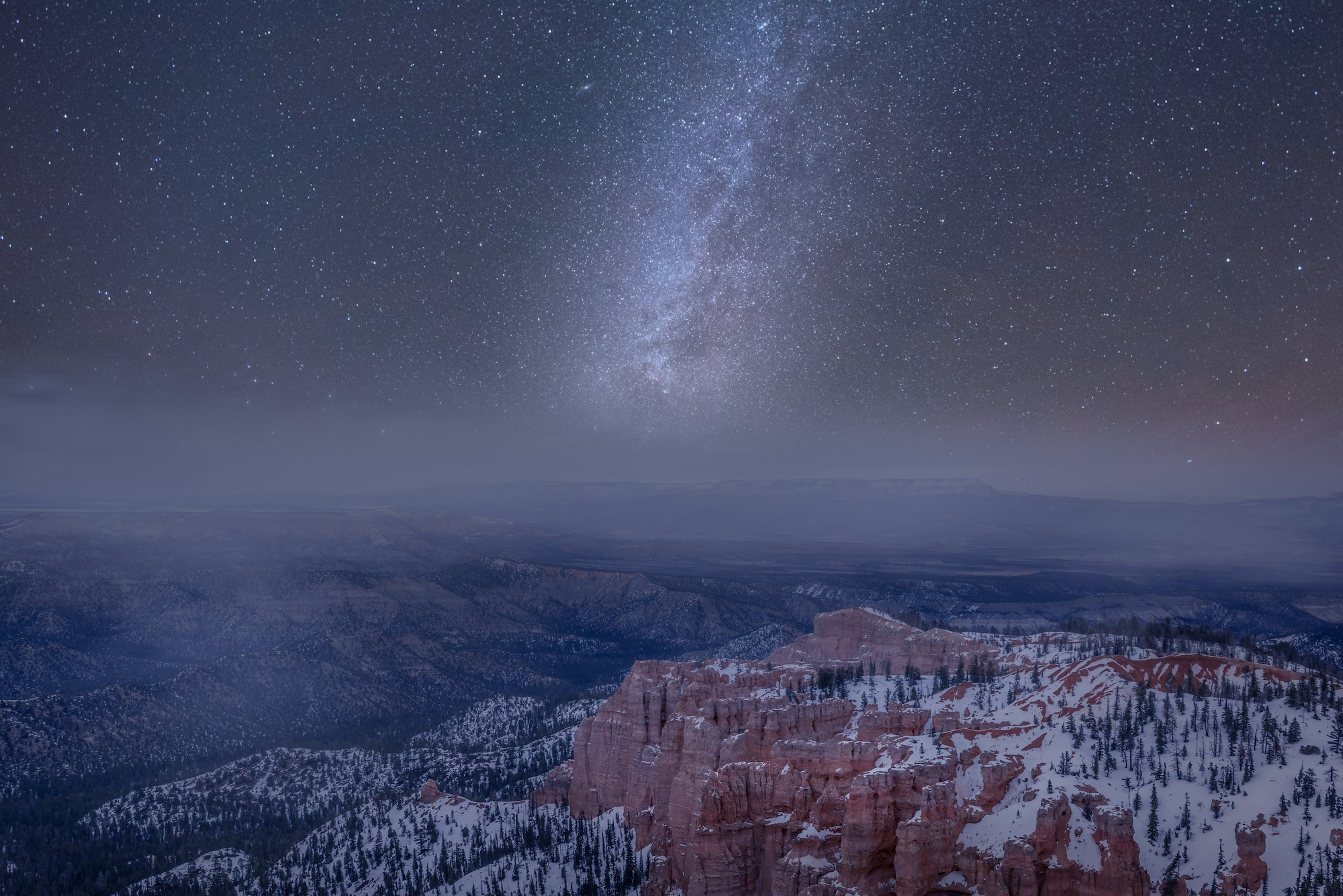
Bryce Canyon National Park, nestled in the southwestern corner of Utah, is a geological masterpiece that captivates visitors with its awe-inspiring landscapes and intricate rock formations. It is a place where nature’s artistry takes center stage, showcasing an otherworldly panorama of colorful hoodoos, towering spires, and vast amphitheaters. In this article, we will embark on a journey through Bryce Canyon and discover 10 fascinating facts that illuminate its unique features, rich history, and undeniable allure. Join us as we delve into the wonders of Bryce Canyon and unlock the secrets of this extraordinary natural wonder.
Geological Formation
Contrary to its name, Bryce Canyon is not a canyon in the traditional sense. It is, in fact, a collection of natural amphitheaters eroded into the eastern edge of the Paunsaugunt Plateau. Over millions of years, the forces of erosion have shaped the rocks into a surreal landscape of hoodoos, spires, and fins, making it a geological marvel.
Hoodoos: Nature’s Sculptures
The defining feature of Bryce Canyon is its abundance of hoodoos. These peculiar rock formations, often described as “rock spires,” are the result of the intricate interplay between frost wedging and erosion. The unique combination of sedimentary rocks, freeze-thaw cycles, and the relentless forces of nature has sculpted these fantastical structures that dot the landscape.

Vibrant Color Palette
One of the most striking aspects of Bryce Canyon is its vibrant color palette. The rocks display an array of hues, ranging from shades of red and orange to pink, yellow, and white. The colors are a result of the varying mineral content within the rock layers, with iron oxide, manganese oxide, and other minerals creating a visual spectacle that changes with the light and weather conditions.
Ancient Origins
The rock formations at Bryce Canyon have a rich history that dates back millions of years. The sedimentary rocks, including limestone, sandstone, and siltstone, were deposited during different geologic periods. The oldest rocks in the park, found at the bottom of the formations, are approximately 70 million years old.
Paiute Native American Connection
Long before European settlers arrived, the Paiute Native Americans inhabited the region surrounding Bryce Canyon. They had a deep spiritual connection to the land, and their legends and folklore are interwoven with the unique geological features of the area. The Paiute referred to Bryce Canyon as “red rocks standing like men in a bowl-shaped canyon” in their language.
Bryce Canyon National Monument
Bryce Canyon gained recognition for its extraordinary landscapes and was designated as a national monument by President Warren G. Harding in 1923. Later, in 1928, it was elevated to national park status, ensuring its preservation for generations to come. Today, it is cherished as one of the crown jewels of the National Park System.
Dark Sky Preserve
Bryce Canyon National Park is renowned for its exceptionally dark skies, making it an ideal destination for stargazing and astronomy enthusiasts. In recognition of its pristine night sky, the park was designated as an International Dark Sky Park in 1999. Visitors can witness the splendor of countless stars, planets, and celestial wonders that are often hidden from view in more urbanized areas.

Amphitheaters and Overlooks
Bryce Canyon boasts a series of natural amphitheaters that offer breathtaking panoramic views. The most famous of these is Bryce Amphitheater, which encompasses iconic viewpoints such as Sunrise Point, Sunset Point, and Inspiration Point. Each overlook provides a different perspective, showcasing the vastness and intricate details of the hoodoos and rock formations.
Hiking Trails for Every Adventurer
Exploring Bryce Canyon is a delight for hikers of all skill levels. The park offers a network of well-maintained trails that wind through the hoodoos and lead to mesmerizing viewpoints. From easy strolls along the Rim Trail to more challenging hikes like the Fairyland Loop or the Queen’s Garden Trail, there is a trail for every adventurer to experience the park’s wonders up close.
Wildlife and Flora
Bryce Canyon is not only a geological wonderland but also a sanctuary for diverse wildlife and flora. The park is home to a variety of animals, including mule deer, elk, coyotes, and a multitude of bird species. The high elevation and unique ecosystem support a range of plant life, from ponderosa pines and Douglas firs to delicate wildflowers that add bursts of color to the landscape.
Conclusion
As we conclude our journey through the enchanting beauty of Bryce Canyon, we hope these 10 fascinating facts have deepened your appreciation for this geological masterpiece. From the surreal hoodoos to the vibrant colors and rich history, Bryce Canyon National Park is a testament to the extraordinary forces of nature. Whether you explore its trails, gaze at the star-filled skies, or simply stand in awe of its majestic vistas, Bryce Canyon invites you to experience the wonders of the natural world and create memories that will last a lifetime.
Was this page helpful?
Our commitment to delivering trustworthy and engaging content is at the heart of what we do. Each fact on our site is contributed by real users like you, bringing a wealth of diverse insights and information. To ensure the highest standards of accuracy and reliability, our dedicated editors meticulously review each submission. This process guarantees that the facts we share are not only fascinating but also credible. Trust in our commitment to quality and authenticity as you explore and learn with us.
